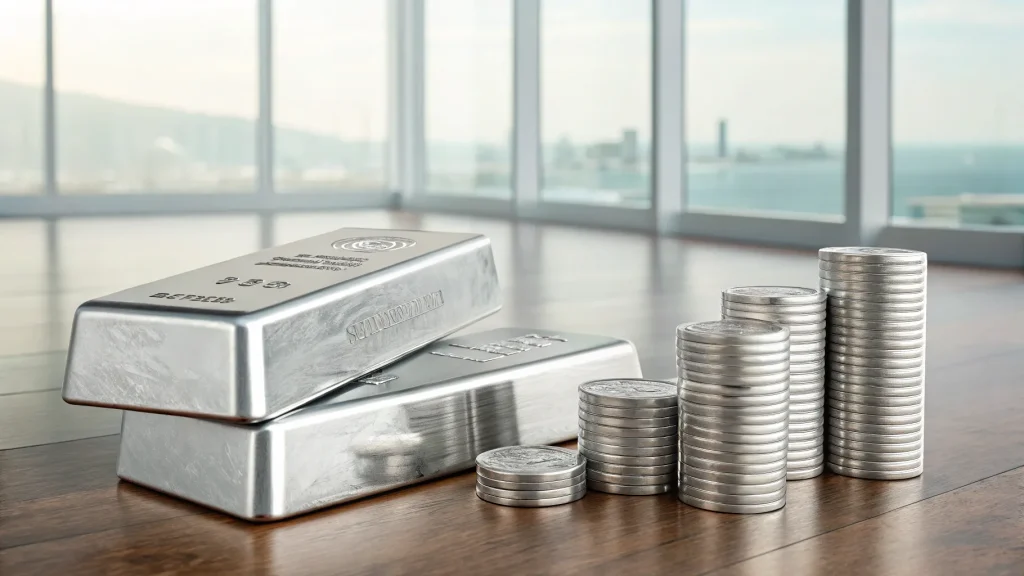As prices climb and budgets tighten, some investors are reaching for old standbys. The latest focus is silver, which is drawing fresh attention as a potential shield against inflation. The pitch is simple: in uncertain periods, tangible assets can help steady a portfolio.
Advisers say the move comes as households and markets watch for signs that inflation could persist. While central banks raise and lower rates, investors look for ways to keep purchasing power intact. Silver sits at the crossroad of finance and industry, offering a blend of perceived safety and real-world use.
Table of Contents
ToggleWhy Silver Is Back in the Conversation
Silver has long been grouped with precious metals that can hold value when currencies weaken. Unlike gold, it also serves factories, solar panels, and electronics. That dual role adds demand that can rise or fall with the economy.
“If you’re worried about increased inflation, adding precious metals like silver to your portfolio can be a smart choice.”
The appeal is diversification. Silver does not always move in step with stocks or bonds. In stretches when inflation erodes fixed income returns, metal prices can move higher as investors seek alternatives. Still, market history shows that silver can swing sharply in both directions.
A Look at the Track Record
Financial planners often point to past spikes during high inflation periods, but the picture is mixed. Silver has posted strong runs, followed by deep drops. The metal’s link to industrial demand adds another layer. A slowdown in manufacturing can cap rallies, even when inflation stays elevated.
Gold is often viewed as a steadier store of value, but silver’s lower price per ounce makes it more accessible to smaller investors. That accessibility can also invite speculation, which magnifies price moves. The result is a hedge that can be helpful, but not always gentle.
Voices From the Advisory Desk
Wealth managers are split on how much exposure makes sense. Some suggest a modest allocation to precious metals within a broader plan. Others caution against chasing headlines.
“Use metals as an insurance policy, not the whole house,” one portfolio strategist said. “You want enough to matter, but not enough to dominate your risk.”
Another adviser added, “Silver’s industrial uses are a strength, but they also tie it to the business cycle. That cuts both ways for inflation protection.”
Risks, Costs, and Practical Choices
Buying physical silver introduces storage and security issues. Funds and exchange-traded products offer simpler access, though fees can eat into returns. Miners’ stocks add leverage to metal prices, but also bring company-specific risks.
- Physical bullion: direct exposure, storage required.
- ETFs and funds: convenient, ongoing fees apply.
- Mining shares: higher volatility, business risks matter.
Liquidity is another factor. Most silver funds trade easily, but physical coins and bars may carry wider bid-ask spreads. Taxes also vary by product and location, and can affect net gains.
What a Balanced Plan Looks Like
Experts often recommend setting clear goals before adding metals. Is the aim inflation protection, crisis hedging, or short-term trading? The answer affects how much to buy and which vehicles to use.
Several advisers suggest starting small and rebalancing on a schedule. That approach trims positions after rallies and adds on pullbacks. It also keeps emotions from steering decisions when markets get loud.
Outlook and What to Watch
The path ahead depends on inflation trends, interest rate moves, and industrial demand. If inflation stays sticky and growth holds, silver could benefit from both themes. If growth cools, the industrial link may weigh on prices even as inflation persists.
Investors will track central bank signals, energy prices, and manufacturing data. Solar demand is another variable, as panel production uses significant silver. Shifts in technology and recycling could alter that balance over time.
In a period marked by high uncertainty, silver offers a familiar tool with modern twists. It can help diversify a portfolio, but it comes with real swings. The takeaway is straightforward: treat silver as one piece of a broader plan, size it carefully, and keep an eye on the same forces that move the rest of the market. For those guarding against rising prices, the metal may earn a spot, but it should not be the only line of defense.
















